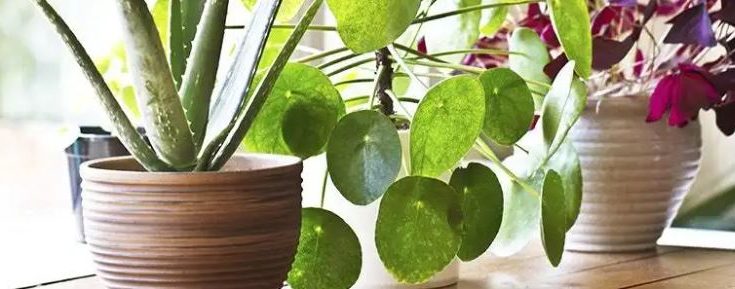Summer means vacations, for houseplants as well as people. If your plants have sojourned on a sunny deck or porch, autumn’s chilly nights signal it’s time to bring your houseplants back indoors.
Cold air can damage tender tropical leaves and cause flower buds to drop, so you need to take action before cold nights settle in. For most houseplants, when night temperatures dip below 45-48°F, you’re flirting with danger and should start bringing plants inside.
Before shifting plants from the Great Outdoors, check for hitchhiking pests that may have established a home on plants during summer months. You’re basically searching for two types of pests: leaf-dwellers and soil-dwellers.
Leaf-Dwelling Pests
Leaf dwellers that attack plants include Aphids, Spider Mites, Scale and Mealybugs. Other hitchhikers might be Spiders, Gnats or Lacewings. Carefully examine leaves and stems. Inspect leaf undersides in particular; insects like to hang out under leaf surfaces. You might also spot insects at the intersections of leaves and stems.
An easy way to remove insects is to hose down plants. It’s best to use a hose with a nozzle so you can direct water underneath foliage. Apply a gentle spray; too hard a jet will not only dislodge insects but likely tear leaves from stems. You can also use a pressurized sprayer to apply water to leaf surfaces.
For small specimens, consider dunking the entire plant into a 5-gallon bucket of water for 15 minutes. This will cause insects on leaves or in soil to flee. Add a few drops of liquid dish or hand soap to the water as a further deterrent to insects. The only plants you shouldn’t dunk are ones that demand dry soil, such as succulents, cactus or plants that go dormant for the winter.
If you spot insects living on plants, after washing leaves and allowing them to dry, apply an insecticide to the plant. When you move the plant indoors, isolate it from other plants to avoid allowing pests to spread. Keep the plant in isolation for about six weeks; make visual inspections to ensure pests are gone.
Soil-Dwelling Pests
Insects can also set up shop in the soil of plants set outside for the summer. These pests include Slugs, Sowbugs, Earwigs, Fungus Gnats and Ants. For plants in small containers, gently slip the plant from the pot and examine soil. Typically Slugs, Sowbugs and Ants will be visible on the outer layer of soil near the drainage holes. Flick them off with a finger or stick.
Pests like Fungus Gnats and Earwigs typically dwell in the upper regions of soil. Remove any dead foliage or flowers from the soil surface, and dunk the soil into water as described above.
For houseplants in large containers, where slipping the plant from the pot or dunking the entire pot is impractical, apply an insecticide to the soil surface and also to soil inside drainage holes. Apply enough insecticide to soak the soil, and you’ll kill pests or cause them to exit. If pests were present in soil by climbing through pot drainage holes, consider repotting the plant next spring and placing wire mesh or hardware cloth inside the base of the pot to exclude insects.



